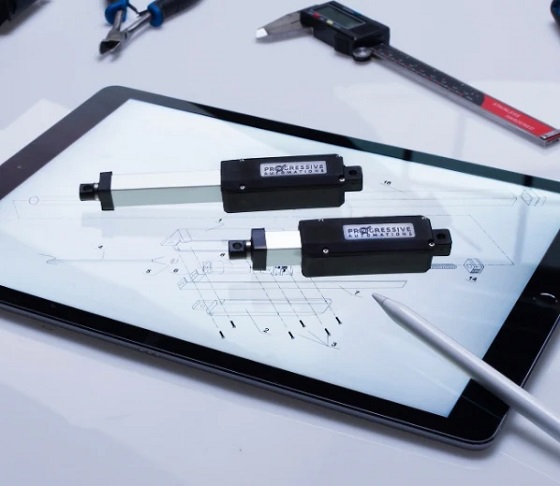Also Interesting
Who is the Best Canadian Hockey Player?

Hockey is a sport that has been dominated by Canadian players for decades. Seeing as its arguably the most popular sport in the country, it’s inevitable for Canada to produce the best talents that the sport has seen.
Canadian players have made an immense impact in promoting hockey and making it a sport that is recognized all over the world. But who is really the best Canadian player to ever grace the sport?
Sports have always caused heated debates on who the greatest of all time is, and is no different. There are a handful of players who have made quite a case as the best of all time, but there is hardly any undisputed GOAT considering that these players have played in different generations and have not all been able to face off against each other in their primes.
While there is no single metric to determine who the best hockey player is, let’s take a look at who among the greats have the best case to be the best of all time, by looking at factors such as their statistics, accolades, and overall impact to the sport.
The question of who’s the best Canadian hockey player ever can’t be answered with absolute certainty, but the following players are perhaps the consensus greatest Canadian hockey players of all time.
Gordie Howe
Gordie Howe was called “Mr. Hockey” for a reason. The Saskatchewan native was a natural-born talent who was destined for greatness.
Howe was a rare ambidextrous player who was equally adept using both hands and was utterly dominant in all levels that he played in.
An icon for the Detroit Red Wings, Howe played a stunning 1687 games with Detroit, and holds the record for most NHL regular season games played with a single team. With Howe at the helm, Detroit was able to win four Stanley Cup Championships in the early 50’s.
A deadly scorer, Howe led the league in scoring five times and is a six-time recipient of the Art Ross Trophy. He is likewise a six-time winner of the Hart Memorial Trophy in recognition of his invaluable contributions to his team.
He is also the progenitor of the “Gordie Howe Hat Trick,” which is achieved by scoring a goal, netting an assist, and getting in a fight in a single game.
After an incredible career totaling 32 professional seasons, Mr. Hockey finished his career with a total of 1767 games, which is currently second in the record books, and 1850 points scored, for fourth all-time, and 1049 assists made throughout his career.
Howe was the first player to score 1000 goals and play at least 1500 games in NHL history, and his 23 All-Star Game appearances remains an unmatched record. He also holds the record for most consecutive 20-goal seasons in the NHL at 22, from 1949 to 1971. Needless to say that he was inducted to the Hall of Fame.
Wayne Gretzky
Perhaps no name is more synonymous with hockey that Wayne Gretzky. The Great One is unarguably the greatest scorer to ever play in the NHL, and no one even comes close.
Although Gretzky wasn’t always the most athletic on the floor, his IQ was unmatched, and he is widely considered the smartest player in NHL history, having a thorough understanding of the game and the ability to anticipate and improvise plays while also knowing how to execute the right play at the right time.
Gretzky is a four-time Stanley Cup Winner, and has also won the Canada Cup thrice. The 18-time All-Star is a holder of 10 Art Ross Trophies and nine Hart Trophies, and is the player with the most wins for each trophy.
He has set and remains the sole holder of numerous career records in the NHL. Gretzky is the only player to have scored more than 2000 points in their career, totaling an astonishing 2857 points throughout 1487 games played. Furthermore, he also holds the record for most assists with 1963. As if that weren’t impressive enough, no other player in the history of the league was able to tally more goals and assists combined that Gretzky’s 1963 assists.
The Hall of Famer is also the only player other than Mario Lemieux to score 160 points in a season. Lemieux was able to accomplish the feat four times while Gretzky did so nine times, while eclipsing the 200-point mark four times.
Bobby Orr
The undisputed greatest NHL defenseman of all time, Bobby Orr’s contributions to the game of hockey cannot be denied.
A two-time Stanley Cup Winner with the Boston Bruins, Orr’s star power was undeniable. His two-way capabilities paved the way for countless defensemen who played in the NFL.
Orr is a two-time Art Ross Trophy winner, a three-time Hart Memorial Trophy, and holds the record for most James Norris Memorial Trophies with eight.
His Hall of Fame career saw him become the first and only defenseman to score nine hat tricks, the only defenseman to win the Art Ross Trophy, and the only player in the history of the league to win the Norris Trophy, Art Ross Trophy, Hart Memorial Trophy, and Conn Smythe Trophy all in one season, when he did so in the 1969-70 season. Although Orr’s career was cut short by injuries, he was able to accomplish feats that few players with full careers can.
Also Interesting
How to Deposit and Withdraw in CAD at Sol Casino: A Guide for Canadian Players

When choosing an online casino, Canadian players not only look for exciting games and bonuses but also for easy and secure payment methods in Canadian dollars (CAD). Sol Casino understands this need and has created a streamlined system for deposits and withdrawals that suits players across Canada.
This guide walks you through how to fund your account, cash out your winnings, and which methods are most efficient and convenient.
Why Use CAD at Sol Casino?
Sol Casino supports transactions directly in Canadian dollars, which is a huge advantage. This means:
No currency conversion fees
Simplified banking
Faster transactions
Better tracking of your gambling budget
For Canadian players, avoiding unnecessary fees and delays is crucial. Sol Casino ensures you can deposit and withdraw in your local currency without any added complications.
How to Deposit Funds at Sol Casino (Step by Step)
Funding your Sol Casino account is simple. Follow these steps to make a deposit:
1. Log in to your Sol Casino account.
2. Go to the Cashier/Deposit section.
3. Choose your preferred payment method.
4. Enter the amount you wish to deposit (minimum deposit usually starts at $20 CAD).
5. Follow the prompts to complete the transaction.
Most deposits are instant, meaning you can start playing right away.
Popular Deposit Methods for Canadians
Sol Casino offers a variety of trusted options tailored for Canadian players:
Interac e-Transfer: A go-to choice in Canada, easy to use and highly secure.
MuchBetter: A modern e-wallet app offering fast, private transfers.
ecoPayz: Another reliable e-wallet widely used in Canada.
Visa/Mastercard: Traditional and familiar for most users.
Cryptocurrencies: Includes Bitcoin, Ethereum, and more for added privacy.
Each method is secure and designed to fit your lifestyle and preferences.
How to Withdraw Winnings in CAD
Cashing out your winnings is just as easy. Here’s how to request a withdrawal:
1. Go to your account dashboard and select Withdraw.
2. Choose the same method used for depositing (if possible).
3. Enter the amount you want to withdraw.
4. Submit your request and wait for confirmation.
Before processing your first withdrawal, Sol Casino may ask for ID verification to comply with KYC (Know Your Customer) rules. This is standard for any legitimate casino and helps protect your account from fraud.
Withdrawal Processing Time
Sol Casino processes withdrawal requests quickly. Here’s a general idea of how long it may take:
E-wallets (MuchBetter, ecoPayz): 0–24 hours
Cryptocurrency: 1–12 hours (depending on network speed)
Interac: 1–2 business days
Cards (Visa/Mastercard): Up to 3–5 business days
Once your identity is verified, future withdrawals are often processed faster.
Tips for Smooth Transactions
Verify your account early to avoid delays during your first withdrawal.
Use the same method for deposit and withdrawal whenever possible.
Set responsible limits to manage your gambling activity.
Watch for promotions offering cashback or deposit bonuses for specific payment methods.
Sol Casino also sends notifications and email confirmations for each transaction, adding transparency to the process.
Customer Support for Payment Issues
If you run into any trouble while depositing or withdrawing, Sol Casino has a 24/7 support team ready to help. You can use:
Live chat for immediate assistance
Email support for more detailed inquiries
FAQ section with answers to common questions about payments
All services are available in English and French, making support accessible to all Canadian users.
Conclusion: Fast, Flexible, and Canadian-Friendly Banking
Sol Casino has built a payment system that respects Canadian needs. With support for CAD, a variety of local methods like Interac and MuchBetter, and fast withdrawals, it provides a hassle-free banking experience. Whether you’re playing for fun or aiming for big wins, Sol Casino ensures your money is handled safely, securely, and efficiently.
Also Interesting
Actuators in Industrial Automation: How They Improve Efficiency

In the quest for enhanced productivity and reduced operational costs, many industries face challenges in optimizing their automation systems. Integrating advanced technologies, such as actuators, alleviates these issues by automating processes and minimizing manual intervention. Leveraging the capabilities of an actuator allows businesses to streamline operations and achieve higher efficiency.
Industrial automation continues to evolve, with a focus on precision and reliability. As of 2025, advancements in automation technologies are projected to increase productivity by up to 30% in various sectors, according to the International Federation of Robotics report. This growth is attributed to the strategic use of components like the actuator, pivotal in enhancing operational efficiency.
Actuators: What are They?
Actuators are mechanical devices that convert energy into motion and enable precise control over various industrial processes. They are categorized into:
Electric
Hydraulic
Linear
Each type offers unique advantages (e.g., precision, force, speed) for different applications. Understanding what actuators are and how they work is crucial for application in industrial settings.
The question “What are actuators?” is often followed by “What is the work of an actuator?” These devices perform tasks that require movement or force (e.g., opening valves, moving parts in machinery, or adjusting positions in assembly lines). They are integral to systems requiring precise control, making them a cornerstone of modern automation.
The Role of Actuators in Industrial Automation
Actuators are the backbone of industrial automation, enabling precise control and integration across systems. Their ability to convert energy into motion makes them indispensable for optimizing processes, reducing costs, and improving productivity.
In control systems, they work with sensors to enable real-time adjustments. For example, in food processing plants, electric motors adjust conveyor speeds, ensuring consistent packaging and reducing waste. It minimizes downtime and saves businesses time and money.
In robotics, devices like the actuator arm deliver high precision. In automotive assembly lines, linear drives allow robotic arms to weld or paint with millimeter accuracy, reducing rework and enhancing product quality.
Beyond robotics, these motors streamline machinery operations. In the oil and gas industry, hydraulic motors control pipeline valves, eliminating manual intervention in hazardous environments and improving safety.
How Actuators Improve Operational Efficiency
Here is how actuators enhance industrial operation:
They offer precise control over movements, essential in applications requiring high accuracy (e.g., manufacturing, robotics). It reduces errors and improves product quality. For example, in CNC machining, linear actuators ensure cuts are made with exactness, resulting in parts that meet precise specifications.
They speed up production cycles, allowing for higher output in less time. It is beneficial in assembly lines where actuator assembly and actuator adapter components are used to streamline processes. In automotive manufacturing, they can quickly position and secure parts, reducing assembly time.
They minimize the need for human intervention, reducing the risk of errors and accidents. It improves safety and increases productivity by allowing workers to focus on more complex tasks.
In environments where repetitive tasks are common, motors automate these processes, freeing up personnel for strategic roles.
Applications of Actuators in Various Industries
Actuators are used across different industries to enhance efficiency and productivity.
Manufacturing. Linear drives are used in machinery to ensure precise movements and consistent product quality. They are integral in assembly lines, where they automate tasks such as positioning and lifting components. For instance, in electronics manufacturing, actuators precisely place components on circuit boards, ensuring each product meets quality standards.
Oil and gas. Here, hydraulic motors are used for valve control due to their high force capabilities, necessary for handling heavy loads.
Food processing. In this niche, electric motors are preferred for their cleanliness and low maintenance, ensuring production lines remain hygienic and efficient. They are used in machinery requiring precise control (e.g., filling and packaging systems).
How to Choose the Right Industrial Actuator
Evaluate several factors for optimal compatibility with your applications:
Determine whether your application demands linear, rotary, or oscillatory motion. For example, linear motors are ideal for tasks requiring straight-line movement, such as positioning components in manufacturing lines.
Assess the load capacity and force requirements of your application. Heavy-duty applications, like those in the oil and gas sector, often require hydraulic actuators due to their high force capabilities.
Evaluate the operating environment, considering factors such as temperature, humidity, dust, and corrosive conditions. Ensure the actuator’s materials and design are suitable for these conditions by checking IP ratings, temperature limits, and corrosion resistance.
Ensure the motor is compatible with existing control systems. It includes considering manual, mechanical, electrical, or computer-based control options to ensure integration.
Consider safety factors (e.g., emergency stop mechanisms and fail-safe designs), especially in critical applications like vehicle automation.
Actuators are essential in industrial automation, delivering precision, speed, and efficiency to optimize operations across sectors. Integrating the right motors will allow businesses to reduce costs, enhance productivity, and maintain a competitive edge in an automated landscape.
-

 2025 Federal Election2 days ago
2025 Federal Election2 days agoBREAKING: THE FEDERAL BRIEF THAT SHOULD SINK CARNEY
-

 Media2 days ago
Media2 days agoCBC retracts false claims about residential schools after accusing Rebel News of ‘misinformation’
-

 2025 Federal Election2 days ago
2025 Federal Election2 days agoCHINESE ELECTION THREAT WARNING: Conservative Candidate Joe Tay Paused Public Campaign
-

 Business2 days ago
Business2 days ago‘Great Reset’ champion Klaus Schwab resigns from WEF
-

 Bjorn Lomborg2 days ago
Bjorn Lomborg2 days agoNet zero’s cost-benefit ratio is CRAZY high
-

 International2 days ago
International2 days agoPope Francis’ funeral to take place Saturday
-

 Business22 hours ago
Business22 hours agoTrump: China’s tariffs to “come down substantially” after negotiations with Xi
-

 Business1 day ago
Business1 day agoHudson’s Bay Bid Raises Red Flags Over Foreign Influence





